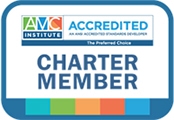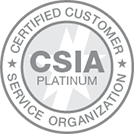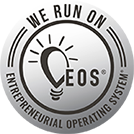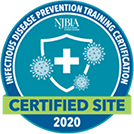How many times have you been to a conference where every session you attended delivered interesting, useful, fresh content with at least two or three new takeaways that you can implement as soon as you get back to the office?
I recently attended ASAE’s 2015 Great Ideas Conference and that is exactly how the experience was for me. The topics were relevant, the sessions kept my attention, and I was offered the opportunity to engage with other participants in group discussions and idea-generating exercises. Most importantly, I came away with some great ideas (no pun intended) that I am excited to put into action with my own association.

But how many of us can say that this is the kind of experience we are delivering to our own conference attendees? Ask yourself, are your conference speakers really providing the quality of education our members deserve? Are they engaging members in a way that gets and keeps their attention and leaves them with practical information and ideas they can apply?
Mark Koepsell, CAE, Chief Executive Officer of Synergos AMC and Ryan O’Rourke, Assistant Executive Director for the Association of Fraternal Leadership & Values led a session at the Great Ideas Conference on creating an engaging educational experience. Here are some tips for spicing up your sessions and designing the engaging education your members are looking for:
1. Maximize the Call for Papers Process — Consider a Three-Phase Approach to Identify Relevant Topics and Speakers

Phase 1: Call for Ideas — Survey your members on a series of questions to help identify relevant content.
- “What do you want to learn about?”
- “What problems or pain points are you dealing with?”
- “What topics are you tired of?”
Phase 2: Call for Subject Matter Experts (SMEs) — Share a list of relevant topics and compile a master list of SMEs who could lend expertise in those areas.
Phase 3: Call for Papers — Encourage identified SMEs to apply for the call for papers and, most importantly, ask applicants the following questions to dive deeper into how they will deliver an engaging presentation:
- “What are the two to three learning outcomes your presentation will deliver?”
- “What specific ideas or tools will your participants be able to apply after participating in your session?
- “Will your presentation be interactive? If so, how?”
- “In what ways will your presentation be new or different?”
- “Will your presentation be geared toward entry, advanced, or expert level participants?”
2. Set Expectations with your Speakers

Clearly outline the components you expect your speakers to include in their presentation within the speaker agreement. Specify if you want them to incorporate an interactive participant exercise and the use of live polling, video, photographs, storytelling, physical props and/or relevant case studies that will resonate with and grab the attention of your participants.
Don’t leave things to chance — play an active role in working with your speakers in advance to deliver an engaging presentation.
3. Be Intentional When Formatting the Design of Your Sessions

Be flexible and intentional when considering the timeframe, space configuration, and format of the meeting sessions based upon the topic content.
Perhaps you want to offer a flipped classroom where the instructor provides each table of participants with a scenario to discuss how to apply the concepts presented in the session.
Maybe the topic content is better suited for a hands-on workshop where you limit the number of participants or charge a separate fee for attending.
Or, maybe a rapid-fire learning session is in order where multiple speakers rotate through the session, with quick, fast-paced presentations that will keep the audience interested and on their toes.
Ask yourself, which format would be most conducive for each particular topic and set your session timeframe and space layout with that in mind.
Examples:
- Lecture Format
- Discussion Groups
- Research Symposium
- Idea Labs
- “How to” Session
- Innovation Stations
- Learning Experience Workshop
Consider including a question on your Call for Papers application that asks the speaker to identify which format their proposed session will follow and consider offering a variety of formats within the conference.
For inspiration on meeting design, visit www.meetingsimagined.com.
The bottom line is that rather than taking a one-size-fits-all approach to designing sessions, we can take an intentional design approach to developing engaging, educational sessions that will leave our attendees wanting more.




